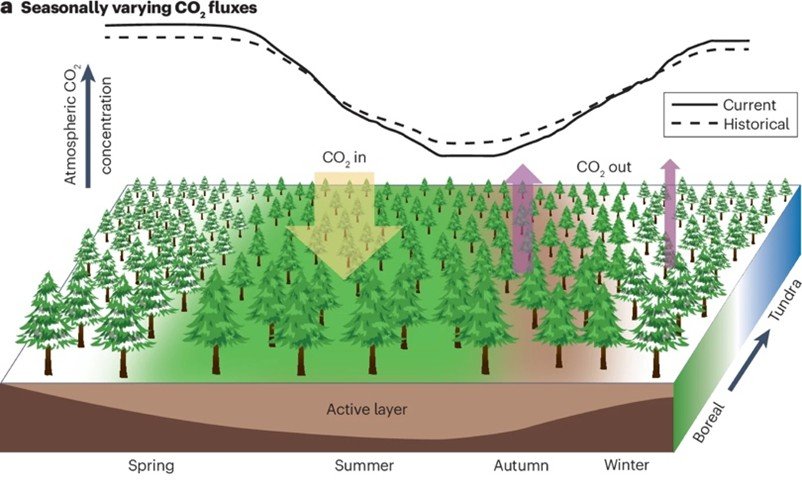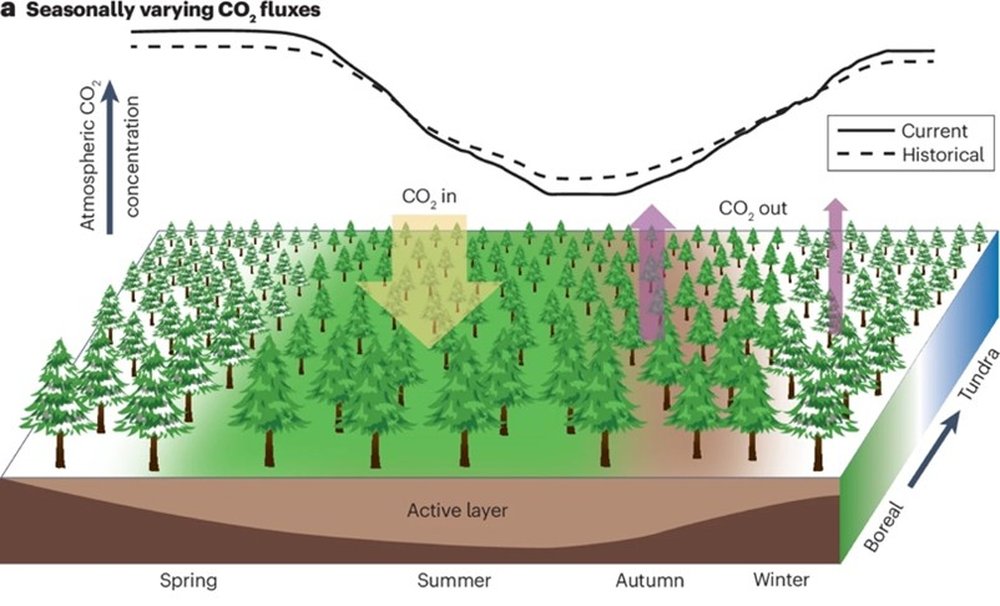The Earth’s “Breath” Is Becoming More Extreme
Researchers Warn of an Accelerated CO₂ Cycle in Northern High Latitudes
Global warming is causing the Earth to "breathe" more rapidly, making the natural ups and downs of atmospheric carbon dioxide levels more extreme. An international meta-study involving Prof. Dr. Wolfgang Buermann from the University of Augsburg shows that seasonal CO₂ fluctuations in arctic and boreal regions have increased by 50 percent since the 1960s. This acceleration of the carbon cycle could seriously endanger global climate goals. In summer, plants absorb large amounts of carbon dioxide (CO₂) from the air as they grow; in winter and during transitional seasons, it is released again—for example, through the decomposition of plant material in the soil. This natural "inhaling and exhaling" is being significantly intensified by climate change. An international research team, including Augsburg geographer Prof. Dr. Wolfgang Buermann, has compared and analyzed multiple studies on this topic. Their meta-study shows that this effect is especially pronounced in the boreal forests of Eurasia - which include parts of Scandinavia, the Urals, and Siberia. Rising temperatures are extending the growing season and increasing plant productivity. The higher carbon dioxide content in the air also acts as a fertilizer. While this boost in productivity leads to more CO₂ uptake during summer, it also comes with increased respiratory activity in winter. The result: the annual CO₂ range in arctic and boreal terrestrial ecosystems (between the 50th and 65th latitudes) is growing steadily. “Our results show that CO₂ fluctuations between summer and winter in the northern latitudes have increased by around 50 percent since the 1960s,” says Augsburg geographer Prof. Dr. Wolfgang Buermann. “We’ve provided strong evidence that more active plant growth is the main reason the carbon cycle is accelerating in northern regions,” Buermann explains. “Scientists have been observing this trend for some time, but by combining data from multiple studies, we were able to better understand the specific processes driving this change.” The international research team is particularly concerned that respiration could begin to outpace productivity. Combined with increases in wildfires and thawing permafrost, this could lead to greater greenhouse gas emissions from northern ecosystems and further intensify global warming. In this context, it’s crucial that current Earth system models -used for climate projections - more effectively integrate these aspects of northern ecosystems. Buermann notes: “Arctic and boreal ecosystems are changing faster than any others on Earth, and the feedback effects could be enormous - which could seriously jeopardize realistic targets for reducing CO₂ emissions.” The study results are the product of 15 years of planning and execution as part of the Arctic Boreal Vulnerability Experiment (ABoVE), led by NASA. The international research team, headed by Zhihua Liu (University of Montana, USA), compiled a vast amount of research findings into a comprehensive review. Liu, Z., Rogers, B. M., Keppel-Aleks, G., Helbig, M., … Buermann, W., … et al. Seasonal CO₂ amplitude in northern high latitudes. Nature Reviews Earth & Environment, doi.org/10.1038/s43017-024-00600-7
Email:
wolfgang.buermann@geo.uni-augsburggeo.uni-augsburg.de ()
Email:
michael.hallermayer@presse.uni-augsburgpresse.uni-augsburg.de ()

CO₂ Fluctuation Between Summer and Winter Rises by 50 Percent
Arctic Ecosystems Especially Relevant
Study Background
Publication:
Scientific Contact
Media Contact
Press images available for download

